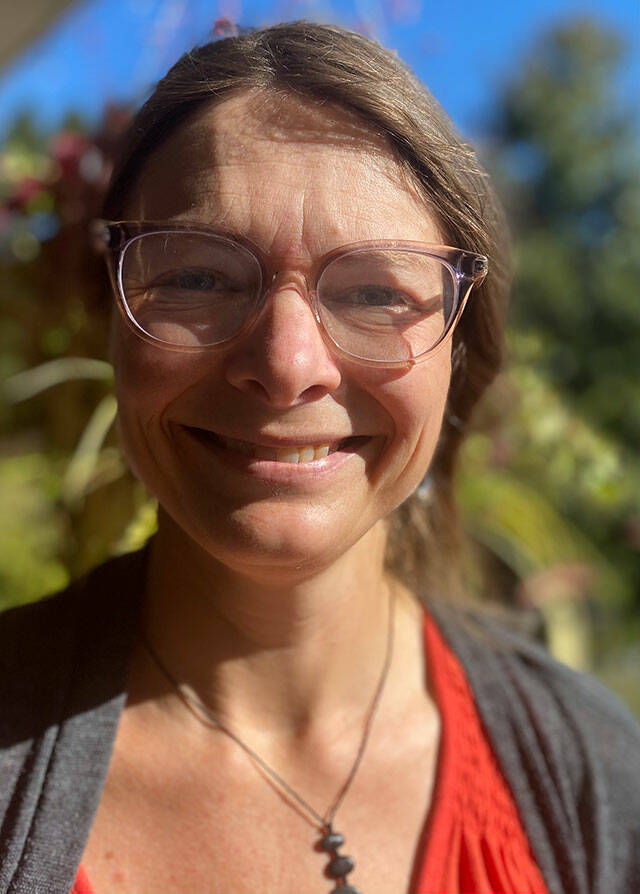Note: Green Briefs commentaries, which appear on a regular basis in The Beachcomber, are presented in a partnership by The Whole Vashon Project.
Birds clearly bring us many benefits, from the joy of the spring chorus and delight in hummingbird escapades to protecting many crops from insect damage.
Bird habitats also support clean waterways. They are environmental engineers who germinate trees and shrubs as they eat and defecate seeds. Because birds and plants have co-evolved over unfathomable lengths of time, they share relationships humans are still unaware of.
Tragically, bird populations are dwindling worldwide. The study “Decline of the North American Avifauna,” a collaboration of nine institutions published in the journal Science, tells us we have lost 29%, or 2.9 billion, of birds in the U.S. since 1970. The vast majority come from common families such as sparrows, warblers, finches and swallows.
These losses have happened in no time at all when you consider the hundreds of thousands, even millions, of years these birds have existed. For example, the red-breasted American Robin is a relatively young species, having evolved just 320,000 years ago according to genetic evidence. However, even this common species is in decline.
The Science report notes that “extinction begins with the loss of abundance in individuals that can result in changes to entire ecosystems. This loss of bird abundance signals an urgent need to address threats to avert future avifaunal collapse and loss of ecosystem integrity.”
Even the Dark-eyed Junco, that seemingly ubiquitous dark-headed little bird searching for food on the ground year-round, has been reduced by 175 million. This equals nearly half of all humans in the U.S., and this is just one species.
Recovery is still possible, but our help is urgently needed. The biggest threat facing birds today, according to scientists, is loss of habitat. Cats and window strikes are next on the list, and these could constitute an entire article on their own. Yet we know we must address habitat if we are to have any hope at all. Volunteers at the Vashon Audubon Society installed a Native Habitat Garden at the Vashon Heritage Museum to demonstrate what is possible.
Birds need habitat, both on their migratory journeys and where they reside. “Habitat” means they have a place to eat, drink, sleep, be safe and reproduce. There are four basic elements: food, water, cover and space. Water is the most straightforward need and can be met with a birdbath or fountain, but any water will do as long as there is a shallow part they can stand in and get out again. Foods can range from seeds and fruit to insects and small animals. Most habitat elements involving shelter are addressed by plants.
Our yards or properties can be the first places we take concrete action toward supporting native birds. Planting native plants is foundational to helping native birds meet their needs by giving them safe places to reproduce, sleep and forage for food. Supporting insect populations also increases most birds’ access to food.
This means both avoiding insecticide use and learning how to attract beneficial insects in a working system that has been perfecting itself for longer than we can imagine. Snags (standing deadwood), piles of sticks, brush piles and thick leaf litter all support communities of bird-feeding insects. Avoid mowing a part of your property during the spring and summer to let some things “go to seed” (provided there isn’t some noxious weed issue), and you will provide habitat for beneficial insects.
You will be taking one step on your way to supporting a complex system that benefits the birds and ultimately all of us.
Visit the Native Habitat Garden at the Heritage Museum and join Vashon Audubon to learn more ways you can help. Find artful inspiration at the Vashon Audubon Mural in the Heron Meadow behind Vashon Center for the Arts (VCA). Artist Britt Freda has painted birds of the Judd Creek watershed and Quartermaster Harbor on the retaining wall along the west side of the meadow, showcasing birds threatened by our changing climate.
Adria Magrath, vice president of Vashon Audubon Society, is a naturalist, college biology professor and a citizen scientist engaged in the community. She volunteers for the Vashon Nature Center and works on the organic farm at The Country Store where you can find her most weekdays to ask your bird questions.



